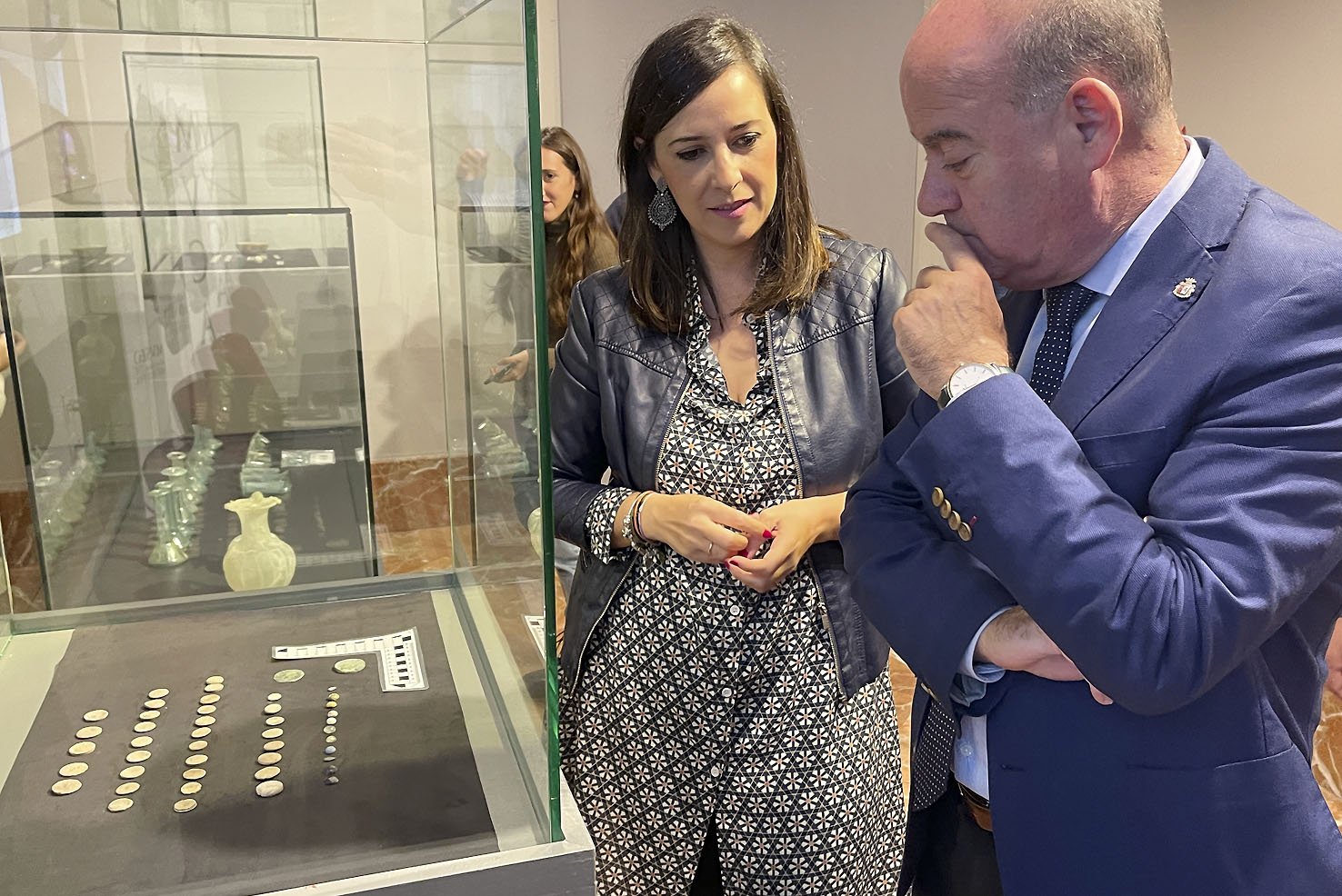Archaeologists Unearth Roman Necropolis in Southern Spain
By Jake Erlewine
An incredibly well-preserved Roman cemetery from the 1st-2nd centuries AD was found during an archaeological survey of the site of the future Dry Port of Antequera, near Malaga. The site contains 54 burials, with 30 graves and 24 incinerations respectively. A tomb, having been named “Tomb 307” by archaeologists, contains a lead sarcophagus, which is an unusual find considering that the production of lead sarcophagi was centered in Syria and Judaea, rather than in Hispania.
City officials examine the contents of the trousseaux. Credit: City of Antequera
The tomb in question is also a spectacular find for being a double burial, with the remains of a teenager found inside the sarcophagus, and the remains of another teenager superimposed on the cover of the coffin. This isn’t especially rare, but what makes this tomb so special is the remarkable trousseaux which were unearthed alongside it. This contains 15 glass unguentaria, 25 tiles from the popular Roman game ludus latrunculorum, and a coin from the 2nd century AD. The superimposed burial’s trousseau contained 17 tiles from the same game and a few glass marbles. These were incredibly well-preserved, and provide valuable insight into the lives of young women during this era. The tomb and trousseaux have been transferred to the Museo de la Ciudad de Antequera for further study.
While the city of Antequera is most notable for containing Neolithic tumuli, which have been inscribed as a UNESCO world heritage site, the newly unearthed Roman ruins, along with a Roman spa complex near the town, point to the “richness of Roman settlement around the Guadalhorce river,” as mayor Manolo Barón points out. The area, known in ancient Rome for its olive oil production, was one of the most heavily Romanized zones of the Empire, to the point where all free Hispanians were granted citizenship in the third century.
The usage of lead in the sarcophagus specifically points to Antiquera’s importance, as the rarity of lead sarcophagi in the West cannot be understated. This is seen in the treatment of a lead sarcophagus found in Gabii, 11 miles from Rome, found by a team from the University of Michigan in 2010. Nicola Terrenato, a professor of classical studies at Michigan, remarked that “Romans as a rule were not buried in coffins to begin with and when they did use coffins, they were mostly wooden. There are only a handful of other examples from Italy of lead coffins from this age, the second, third or fourth century AD We know of virtually no others in this region.” Therefore, why a lead sarcophagus was found in Antequera, and why it was used in a double burial rather than being left alone, raises many questions about its inhabitant. These questions and more may be answered once more research is done on this specific site in an effort better to situate the necropolis in the Roman history of Antequera and Hispania as a whole.
Bibliography
“An Archaeological Mystery in a Half-Ton Lead Coffin.” University of Michigan News, 29 Mar. 2010, https://news.umich.edu/an-archaeological-mystery-in-a-half-ton-lead-coffin/.
“Hallada En Antequera Una Singular y Excepcional Tumba Romana Que Incluía También Un Espectacular Ajuar Con Muy Pocos Precedentes En El Mundo.” Portal Web Del Ayuntamiento De Antequera, 10 Nov. 2022, https://www.antequera.es/noticias/buscador-de-noticias/Hallada-en-Antequera-una-singular-y-excepcional-tumba-romana-que-incluia-tambien-un-espectacular-ajuar-con-muy-pocos-precedentes-en-el-mundo/.
“Ancient Roman Necropolis Discovered in Southern Spain.” ARTnews.com, ARTnews.com, 17 Nov. 2022, https://www.artnews.com/art-news/news/ancient-roman-necropolis-discovered-antequera-spain-1234647087/.
“Roman Necropolis with 54 Tombs Discovered in Spain's Antequera.” Olive Press News Spain, 11 Nov. 2022, https://www.theolivepress.es/spain-news/2022/11/13/roman-necropolis-with-54-tombs-discovered-in-spains-antequera/.

